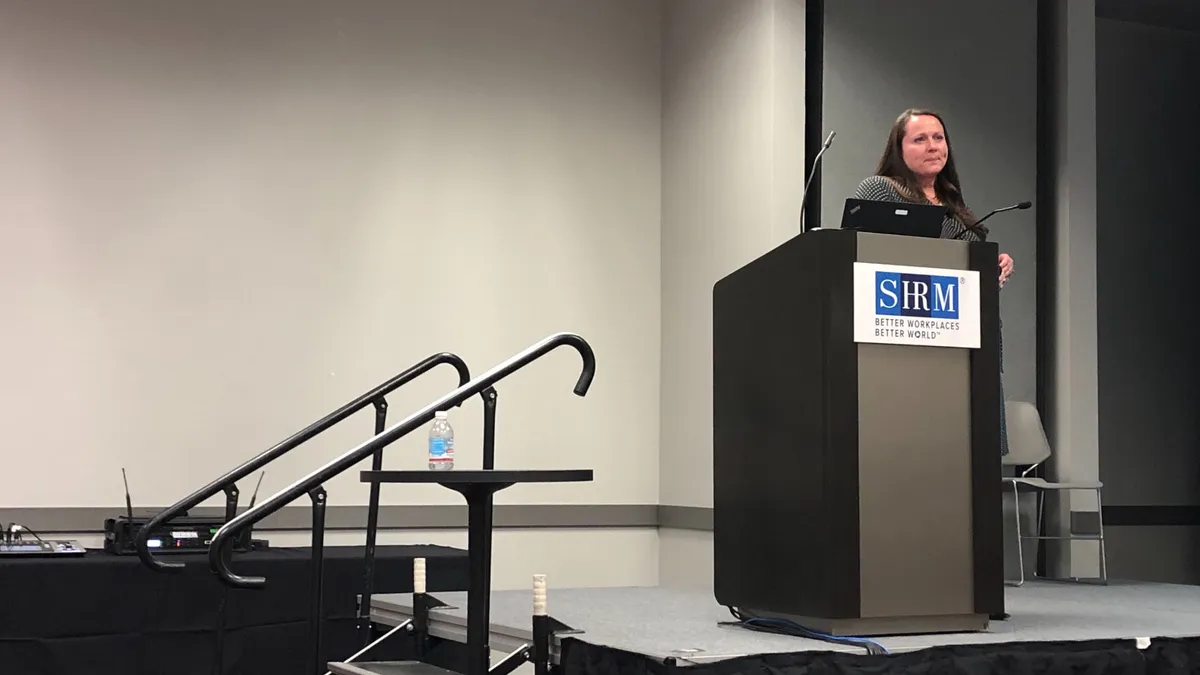LAS VEGAS — As Land O'Lakes scouted a location for its new headquarters that opened one year ago, it sought a place that could house talent-luring amenities. The facility it chose is now home to 1,800 employees, a daycare, a fitness center and an on-site health clinic.
The company's amenity-driven property hunt came along a larger "wellness journey" that's been progressing for several decades, Land O'Lakes Director of Benefits Emily Maher told attendees at the Society for Human Resource Management 2019 Annual Conference. In particular, Land O'Lakes' on-site clinic — the main subject of Maher's talk — sculpted its wellness journey into a holistic approach to employee well-being.
Financial foundation: The key to the on-site clinic
As Land O'Lakes established the on-site clinic at its new Arden Hills, Minnesota, headquarters, it focused on making benefits about its employees and making them personal, Maher said. A medical assistant, nurse practitioner, physical therapist and personal trainer staff the 850-square-foot clinic, which features two care suites, a physical therapy room and a lab.
Before Maher and her benefits team could make the clinic a reality, they needed executive buy-in, which included a discussion about money. "You must have the financial basis to put in an on-site clinic," she said.
To make a convincing case that the clinic would produce a worthwhile return on investment, those proposing the amenity had to show that employees would save time and money by seeking medical care at their workplace rather than a facility in the community. "If our employees can save money, it saves them money and it saves us money," Maher said.
Smaller medical bills aren't the only result of an on-site clinic that appeals to executives. "I will tell you that although it's important for us to demonstrate the ROI, there are other facets of the clinic that are important," Maher said.
The advantage of on-site data
Using the insurance claims and pharmacy data collected by the on-site clinic through its medical provider partner, Land O'Lakes identified its top health risks: diabetes, depression and obesity.
From there, it could introduce targeted solutions and initiatives through the staff at the on-site clinic, paired with others throughout the workplace. The onsite clinic gave the company the reach to impact at least 1,800 employees, Maher said.
Once it identified depression as a top risk, for example, Land O'Lakes introduced a suicide awareness program, an employee assistance program (EAP) and another emotional wellness program called Learn to Live. "The statistics on using EAPs are incredibly low in most organizations," Maher said, noting that most are happy to see an employee usage rate of 4%.
More employees at the Land O'Lakes headquarters are using the program because the staff at the on-site clinic refer employees to the EAP, whether during a conversation at an appointment, a chat at the Land O'Lakes cafeteria or a session during an employee resources meeting, Maher said. This surge in usage is owed to the personal relationships employees develop with the clinic staff, Maher said: "It's things like this that drive home the need for integrated opportunity and personalized experience."
The data also revealed gaps in employees' care. Employees who hadn't sought medical care in years popped in to see the medical assistant or nurse practitioner during their lunch breaks, which gave the on-site clinic staff — who had access to their care history — the opportunity to address long-ignored or unnoticed problems, Maher said. "So many opportunities are available to us by leveraging the data we have," Maher said. "It has shored up our wellness plan."









